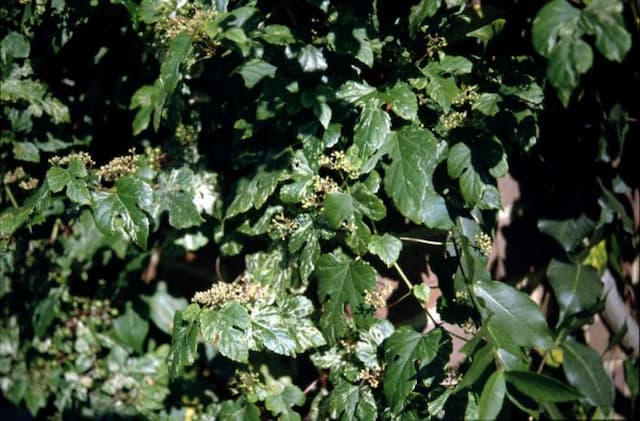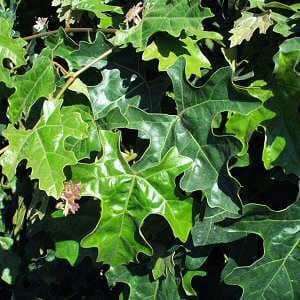Grape Vitis vinifera



ABOUT
Grapes are small, round fruits that typically measure around 0.5 to 1 inch in diameter. They grow in clusters on grapevines, which can extend several feet in length, with individual grapes attached to the vine by thin stems. Grapes come in a variety of colors, including green, red, and purple, and they are known for their sweet and juicy flavor.
About this plant
 Names
NamesFamily
Vitaceae
Synonyms
Grape vine, Cultivated grape, European grape, Wine grape, Common grape vine
Common names
Vitis vinifera L.
 Toxicity
ToxicityTo humans
Grapes, in general, are not considered toxic to humans. They are safe for consumption and can be enjoyed as a healthy snack or used in various culinary preparations. However, it's important to note that some individuals may have specific allergies or sensitivities to grapes, and excessive consumption can lead to gastrointestinal discomfort in some cases. It's always advisable to consume grapes in moderation as part of a balanced diet.
To pets
Grapes, specifically certain varieties and in unknown quantities, can be toxic to certain animals, particularly dogs. The exact compound or toxin responsible for the toxicity in grapes is not yet fully understood. However, ingestion of grapes or raisins by dogs has been associated with kidney failure and other serious health issues. It's crucial to keep grapes and raisins out of reach of dogs and other pets, and in case of accidental ingestion, immediate veterinary attention should be sought to prevent any potential harm.
 Characteristics
CharacteristicsLife cycle
Perennials
Foliage type
Deciduous
Color of leaves
Green
Flower color
Green
Plant type
Climber
Hardiness zones
3
Native area
Middle East
Benefits
 General Benefits
General BenefitsNutritional Value: Grapes are rich in essential vitamins and minerals, including vitamin C, vitamin K, potassium, and copper. Incorporating grapes into your diet can help support a balanced and nutrient-rich eating plan.
Hydration: Grapes have high water content, which can contribute to hydration. Enjoying grapes as a snack or incorporating them into meals can help maintain proper hydration levels in the body.
Antioxidant Properties: Grapes contain antioxidants, such as flavonoids and resveratrol, which have been linked to potential health benefits. These antioxidants help protect the body against damage caused by harmful free radicals.
Digestive Health: Grapes contain dietary fiber, which can support digestive health by promoting regular bowel movements and preventing constipation.
Energy Boost: Grapes contain natural sugars, such as glucose and fructose, which can provide a quick energy boost when consumed as a snack or part of a balanced meal.
Weight Management: Grapes can be a satisfying and low-calorie snack option, making them a suitable choice for individuals looking to manage their weight or reduce calorie intake.
Skin Health: The antioxidants found in grapes may contribute to maintaining healthy skin by protecting against oxidative stress and promoting a youthful appearance.
Oral Health: Grapes contain natural compounds that may help support oral health, such as polyphenols that can inhibit the growth of certain bacteria responsible for tooth decay and gum disease.
Culinary Versatility: Grapes can be enjoyed in various ways, from eating them fresh as a snack to incorporating them into salads, desserts, and even savory dishes. Their versatility makes them a versatile and enjoyable addition to a wide range of recipes.
Refreshing and Enjoyable: Grapes offer a delightful burst of flavor, making them a refreshing and enjoyable snack or ingredient in culinary creations. Their natural sweetness can satisfy cravings for something sweet without relying on added sugars. Medical Properties
Medical PropertiesAntioxidant Activity: Grapes contain various antioxidants, including resveratrol, flavonoids, and anthocyanins. These compounds have been studied for their potential to neutralize harmful free radicals and reduce oxidative stress, which may contribute to overall health and well-being.
Heart Health: Some studies suggest that the antioxidants present in grapes may have cardioprotective effects. Resveratrol, in particular, has been linked to potential benefits for heart health, such as reducing inflammation, improving blood flow, and supporting healthy cholesterol levels.
Blood Pressure Management: Certain compounds found in grapes, including flavonoids, have been associated with potential blood pressure-lowering effects. However, the specific mechanisms and effectiveness may vary, and it's essential to consult with a healthcare professional for personalized advice.
Anti-Inflammatory Effects: Grapes contain compounds with anti-inflammatory properties, such as resveratrol and quercetin. These compounds may help reduce inflammation in the body, which is linked to various chronic conditions.
Cognitive Health: Some research suggests that grapes, particularly those rich in antioxidants, may have neuroprotective properties and potentially contribute to brain health. However, more studies are needed to fully understand the impact of grapes on cognitive function.
Digestive Health: Grapes are a good source of dietary fiber, which is beneficial for digestive health. Fiber can support regular bowel movements, promote gut health, and potentially reduce the risk of certain digestive disorders.
Skin Health: The antioxidants and other compounds found in grapes may have positive effects on the skin. They may help protect against oxidative damage, improve skin elasticity, and potentially contribute to a more youthful appearance.
Cancer Prevention: Some studies have explored the potential anticancer properties of grapes and their components. Resveratrol and other compounds present in grapes have shown promising results in laboratory and animal studies. However, more research is needed to determine their efficacy in humans. Air-purifying Qualities
Air-purifying QualitiesThere is no credible scientific evidence to suggest that grapes have air purifying qualities
 Other Uses
Other UsesGrape Seed Oil: Grape seeds are sometimes processed to extract their oil, which is used in cooking, skincare products, and as a carrier oil for aromatherapy.
Grape Leaf Wraps: In Mediterranean and Middle Eastern cuisines, grape leaves are used as wraps for dishes like dolmas, where rice, herbs, and spices are wrapped in grape leaves and cooked.
Grape Vine Crafts: The flexible nature of grapevines makes them suitable for crafts and DIY projects. Grapevine wreaths, baskets, and decorative vine designs are popular uses in home décor.
Grape Vinegar: Fermenting grape juice can produce grape vinegar, which can be used as a condiment, salad dressing, or even for cleaning purposes.
Grape Seed Extract Supplements: Grape seed extract is derived from the seeds of grapes and is often available in supplement form. It is believed to have antioxidant properties and is sometimes used as a dietary supplement.
Grape Seed Jewelry: Grape seeds can be dried and used as unique and eco-friendly materials for crafting jewelry, such as earrings, necklaces, and bracelets.
Grape Juice Stains: While not a positive use, grape juice stains can be used to create artistic effects or natural dyes on fabrics or paper.
Grape Pulp Facial Mask: The pulp of grapes can be mashed and used as a natural face mask, believed to have skin-nourishing and antioxidant properties.
Grape Leaf Tea: Dried grape leaves can be brewed into a tea with potential health benefits. The tea is said to have soothing properties and is believed to aid digestion.
Interesting Facts
 Feng Shui
Feng ShuiIn Feng Shui, grapes are often associated with abundance, prosperity, and good fortune. They are believed to bring positive energy into the home and symbolize fruitful outcomes. To incorporate grapes in Feng Shui, you can use grape-themed decor, such as paintings or sculptures, in the wealth or abundance area of your home or office. Displaying clusters of artificial grapes can also symbolize abundance and attract positive energy.
 Zodiac Sign Compitability
Zodiac Sign CompitabilityIn astrology, there isn't a specific correlation between grapes and zodiac sign compatibility
 Plant Symbolism
Plant SymbolismAbundance and Prosperity: Grapes symbolize abundance, fertility, and prosperity. Their ability to grow in clusters signifies a bountiful harvest and an abundant life.
Sensuality and Pleasure: Grapes are often associated with sensuality, pleasure, and indulgence. They represent the enjoyment of life's pleasures and the celebration of the senses.
Harvest and Celebrations: Grapes symbolize the harvest season, representing the culmination of hard work and the joyous celebrations that follow.
Transformation and Alchemy: Grapes have been associated with alchemy and transformation due to their role in the process of winemaking. They symbolize the transformation of simple ingredients into something refined and valuable.
Spiritual and Religious Significance: Grapes hold spiritual significance in some religious traditions. In Christianity, grapes are associated with the Eucharist, representing the blood of Christ.
Vitality and Longevity: Grapes are often seen as a symbol of vitality, health, and longevity. Their antioxidant properties and connection to wine, which has been associated with health benefits in moderation, contribute to this symbolism.
 Water
WaterThe watering needs of grapes depend on various factors such as climate, soil conditions, and stage of growth. Here are some general guidelines for watering grapes:
Young Grapes: Newly planted or young grapevines require regular watering to establish their root systems. Water deeply and evenly, providing enough moisture to keep the soil consistently moist but not waterlogged.
Established Grapes: Once grapevines are established, they are relatively drought-tolerant. However, they still require regular watering during dry periods to ensure healthy growth and fruit production. Water deeply and infrequently, allowing the soil to dry slightly between waterings. Aim for around 1-1.5 inches of water per week, including rainfall.
Grape Clusters: During the ripening stage, it's important to provide adequate water to support the growth and development of grape clusters. Watering should be consistent, ensuring the soil remains evenly moist without excess moisture that can lead to rot or disease.
It's crucial to monitor the moisture levels in the soil and adjust watering accordingly, taking into account factors like rainfall and temperature. Proper drainage is also essential to prevent waterlogging and root rot. Light
LightGrapes thrive in full sun, requiring at least 6 to 8 hours of direct sunlight per day. Exposure to sunlight is crucial for the grapes to ripen properly and develop their full flavor potential. Ensure that the grapevines are planted in a location with ample sunlight and minimal shade for optimal growth and fruit production.
 Temperature
TemperatureGrapes are grown in various climatic regions, and different grape varieties have different temperature requirements. However, most grapevines thrive in temperate to warm climates. Here are some general temperature guidelines for grapes:
Growing Season: Grapevines generally grow well in temperatures ranging from 60°F to 90°F (15°C to 32°C) during the growing season. The ideal temperature range for grape growth and fruit development is typically between 70°F and 85°F (21°C and 29°C).
Winter Dormancy: Grapevines require a period of winter dormancy with cooler temperatures. Different grape varieties have different cold hardiness levels, but most can tolerate temperatures as low as -5°F to -15°F (-20°C to -26°C) or even lower in some cases, depending on the variety and rootstock.
Extreme temperature variations, such as sudden frost or heatwaves, can negatively impact grapevines. It's important to select grape varieties suitable for your specific climate and provide appropriate protection during extreme weather conditions. Pruning
PruningProper pruning is vital for maintaining the health, productivity, and shape of grapevines. Here are some general guidelines for pruning grapes: Timing: Grapevines should be pruned during their dormant period, typically in late winter or early spring before bud break. Pruning at this time helps stimulate new growth and fruit production. Remove Dead and Diseased Wood: Start by removing any dead, damaged, or diseased wood. This includes broken branches, dry canes, or wood showing signs of fungal or bacterial infections. Selecting Canes: Identify the strongest and healthiest canes for training and fruit production. Choose 2-4 well-spaced canes per vine for training along the trellis or support structure. Pruning Techniques: Different grape training systems require specific pruning techniques, such as spur pruning or cane pruning. Learn the appropriate pruning method for the specific grape variety and trellis system you are using. The goal is to create an open canopy that allows sunlight penetration and proper airflow. Pruning Goals: Pruning goals may include maintaining an appropriate vine size, promoting fruiting wood, managing vine vigor, and encouraging balanced growth. It's essential to strike a balance between removing enough wood for renewal and leaving enough to support future growth.
 Cleaning
CleaningNot needed
 Soil
SoilGrapes generally thrive in well-draining soils with a pH level between 5.5 and 7.0. Here are some considerations for selecting the best soil for grapes:
Soil Drainage: Grapes prefer soils with good drainage to prevent waterlogging, which can lead to root rot. Avoid heavy clay soils or areas prone to water accumulation.
Soil Texture: Grapes grow well in loamy or sandy soils that provide a balance of water retention and drainage. These soils allow for sufficient root aeration and nutrient uptake.
Organic Matter: Incorporating organic matter, such as compost or well-rotted manure, into the soil can improve its structure, fertility, and moisture retention. This can benefit grapevines by promoting healthy root growth and overall plant vigor.
Soil pH: The ideal soil pH range for grapes is slightly acidic to neutral, between 5.5 and 7.0. Adjusting the pH within this range can help optimize nutrient availability to the plants. Conducting a soil test will provide accurate information about the pH level of your soil and any necessary adjustments that may be needed. Repotting
RepottingNot growing as a potted plant
 Humidity & Misting
Humidity & MistingGrapes are typically grown in regions with moderate humidity levels. While they can tolerate a range of humidity conditions, they generally prefer moderate humidity rather than high humidity. Excessive humidity can increase the risk of fungal diseases, such as powdery mildew and botrytis.
 Suitable locations
Suitable locationsIndoor
Not growing
Outdoor
Grown as a street plant in a suitable climate
Hardiness zone
4-10 USDA
 Life cycle
Life cyclePlanting:
Grapes are typically planted during the dormant season, which is in late winter or early spring. The exact timing can vary depending on the specific region and climate. In many temperate regions, grapevines are planted between February and April.
Bud Break and Shoot Growth:
As spring arrives and temperatures rise, grapevines begin to emerge from dormancy. Buds start swelling and eventually break open, signaling the start of the growing season. Shoots grow rapidly, and leaves begin to unfurl. This stage generally occurs from late March to May, depending on the climate.
Flowering:
Flowering is a critical stage in the grapevine life cycle when clusters of small flowers develop. Pollination occurs during this time, leading to the formation of grape berries. Flowering usually takes place from late spring to early summer, typically between May and June.
Fruit Set:
After successful pollination, the fertilized flowers transition into small, green grape berries. This stage is known as fruit set and occurs shortly after flowering, typically in June or early summer. The small green berries start to enlarge and develop.
Maturation and Ripening:
From summer through early fall, the grape berries continue to grow and undergo maturation. They change color, transitioning from green to their specific hue, such as red, purple, or greenish-yellow, depending on the grape variety. Sugar levels increase, and acids gradually decline, indicating the ripening process. This stage varies in duration, typically spanning from late summer to early fall, from August to September or even October.
Harvest:
The harvest is the culmination of the grapevine's life cycle, representing the time when the mature grapes are harvested for consumption, winemaking, or other uses. The exact timing of the harvest depends on factors such as grape variety, intended purpose (e.g., table grapes or wine grapes), and desired levels of ripeness. In temperate regions, grape harvests usually occur from late summer to early fall, starting around August and extending into October. Propogation
PropogationPropogation time
Late winter - early spring
Cuttings: Propagation by cuttings is a common and effective method for grapevines. It involves taking cuttings from existing grapevines during the dormant season and rooting them to form new plants. Hardwood cuttings are typically taken in late winter or early spring when the grapevines are dormant and have no leaves.
Grafting: Grafting is another method used for grapevine propagation, particularly when a specific grape variety needs to be grafted onto a rootstock for desired traits such as disease resistance or improved vigor. Grafting is usually performed during the dormant season, similar to taking cuttings.
Layering: Layering is a propagation technique where a low-growing branch of a grapevine is bent down to the ground, covered with soil, and allowed to develop roots. Once the roots have formed, the newly rooted portion can be separated from the parent plant and transplanted. Layering is typically done during the growing season when the grapevine is actively growing and has flexible shoots.
 Pests
PestsSpider mite, Thrips, Mealybug
 Diseases
DiseasesDowny mildew, Anthracnose, Powdery mildew









